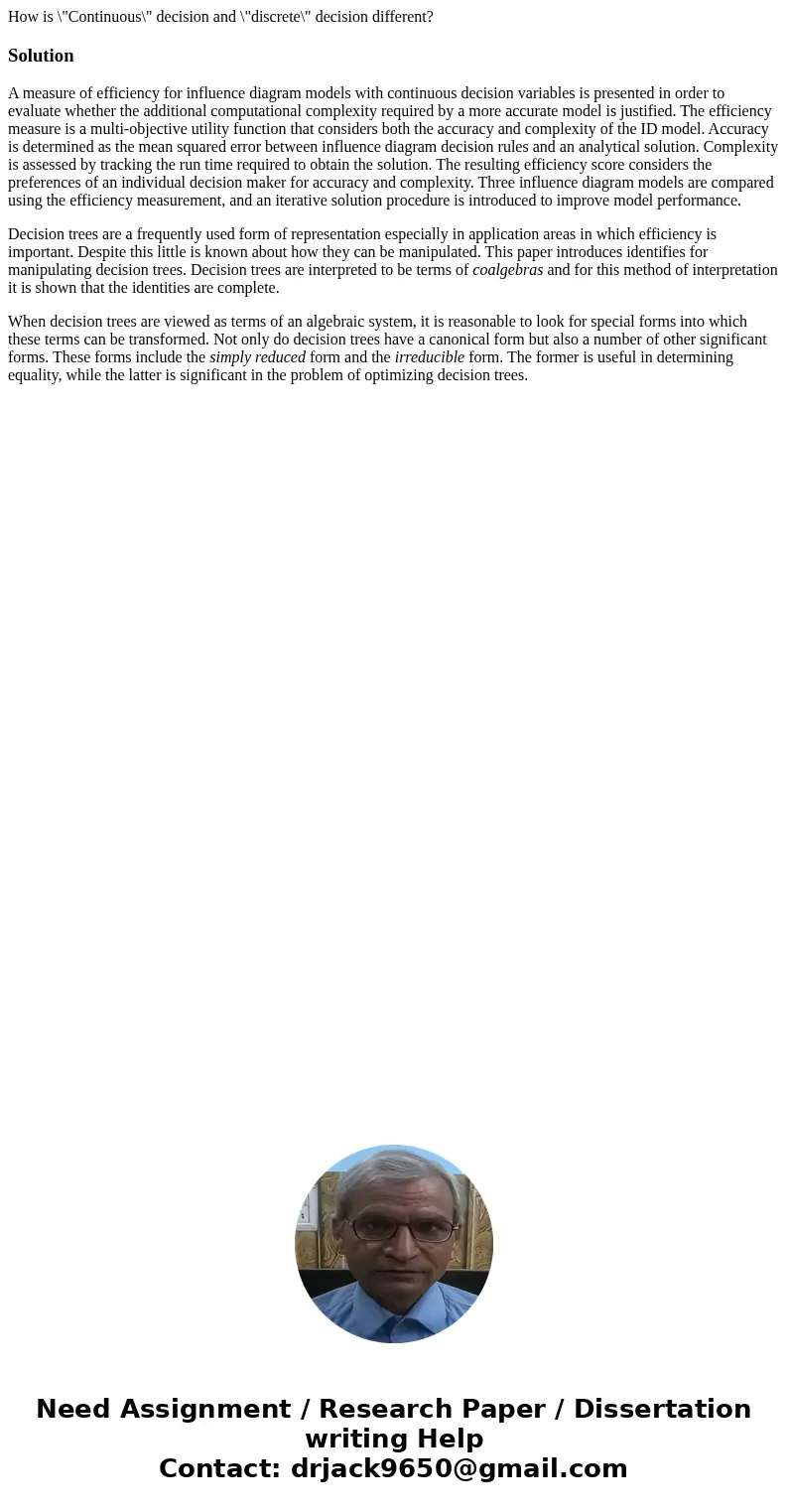How is Continuous decision and discrete decision differentSo
How is \"Continuous\" decision and \"discrete\" decision different?
Solution
A measure of efficiency for influence diagram models with continuous decision variables is presented in order to evaluate whether the additional computational complexity required by a more accurate model is justified. The efficiency measure is a multi-objective utility function that considers both the accuracy and complexity of the ID model. Accuracy is determined as the mean squared error between influence diagram decision rules and an analytical solution. Complexity is assessed by tracking the run time required to obtain the solution. The resulting efficiency score considers the preferences of an individual decision maker for accuracy and complexity. Three influence diagram models are compared using the efficiency measurement, and an iterative solution procedure is introduced to improve model performance.
Decision trees are a frequently used form of representation especially in application areas in which efficiency is important. Despite this little is known about how they can be manipulated. This paper introduces identifies for manipulating decision trees. Decision trees are interpreted to be terms of coalgebras and for this method of interpretation it is shown that the identities are complete.
When decision trees are viewed as terms of an algebraic system, it is reasonable to look for special forms into which these terms can be transformed. Not only do decision trees have a canonical form but also a number of other significant forms. These forms include the simply reduced form and the irreducible form. The former is useful in determining equality, while the latter is significant in the problem of optimizing decision trees.

 Homework Sourse
Homework Sourse